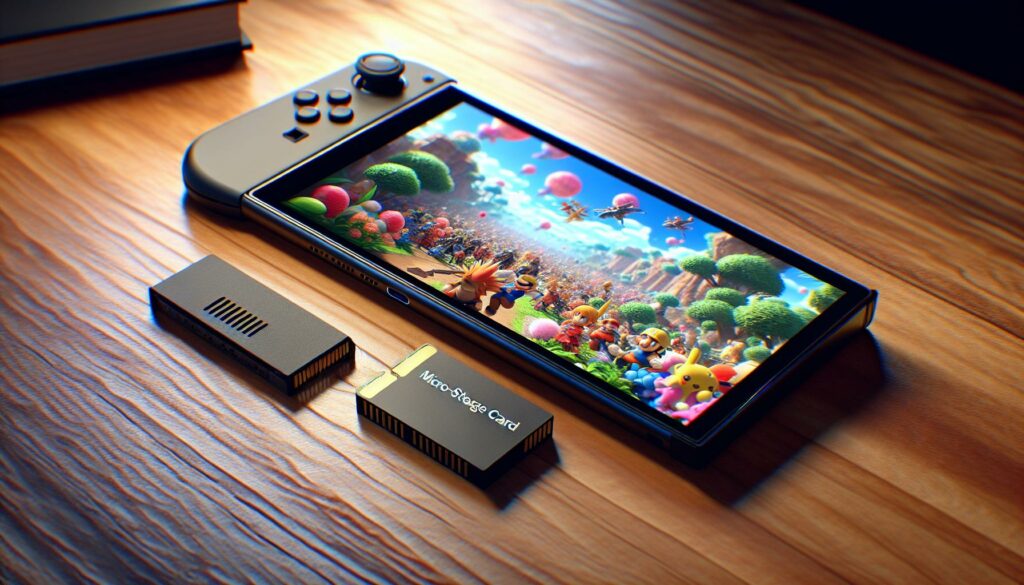When I first got my Nintendo Switch, I was thrilled to dive into a world of gaming possibilities. But soon enough, I realized that storage size can make or break that experience. With so many fantastic games available, understanding how much space you really need is crucial. The Nintendo Switch comes with limited internal storage, and that can fill up faster than you might expect. Whether you’re a casual player or a hardcore gamer, knowing how to manage your storage effectively can enhance your gaming experience. In this article, I’ll explore the ins and outs of Nintendo Switch storage size, helping you make informed decisions to keep your gaming library accessible and enjoyable.
- Internal Storage Limits: The original Nintendo Switch has 32 GB of internal storage while the OLED model offers 64 GB, but actual usable space is lower due to system files and updates.
- Expandable Storage Options: Utilizing microSDXC cards significantly increases storage capacity, ranging from 64 GB to 2 TB; choose cards that meet the UHS-I standard for best performance.
- Game Size Considerations: Popular games vary widely in size, with some AAA titles requiring over 20 GB, emphasizing the need for effective storage planning.
- Effective Storage Management: Regularly check and manage available space by uninstalling unplayed games, and moving titles to microSD cards to optimize storage.
- Proactive Approach to Updates: Download game updates promptly when there’s sufficient space to avoid installation issues and maintain performance.
Nintendo Switch Storage Size
The Nintendo Switch comes with varying internal storage capacities. The original model features 32 GB, while the Nintendo Switch OLED model offers 64 GB. This built-in storage accommodates system software, downloadable content, and game data. However, players quickly discover that available storage can diminish, especially with larger game files and frequent updates.
Expandable storage options enhance the Nintendo Switch’s capabilities. Users can insert microSDXC cards for additional memory. These cards significantly increase storage capacity, with sizes ranging from 64 GB up to 2 TB. It’s important to note that not all microSD cards are equal. Players should prioritize cards that meet the UHS-I standard for optimal performance.
Managing storage effectively ensures a steady gaming experience. I recommend regularly checking available space and uninstalling games not actively played. Additionally, players can move games between internal storage and microSD cards. This flexibility helps optimize space and keeps the game library organized, enhancing overall gameplay enjoyment.
The physical size of games varies widely. For example, while some indie titles may only occupy a few hundred megabytes, major releases can require upwards of 20 GB. Understanding individual game sizes allows for better planning and storage management.
Ultimately, recognizing the significance of storage size influences how I and other players engage with the Nintendo Switch. Familiarity with storage options and management strategies makes for a more satisfying gaming experience.
Standard Storage Options
The Nintendo Switch offers standard storage options that play a crucial role in gaming experience. Understanding these options helps manage games effectively and has a significant impact on gameplay.
Internal Storage Capacity
The original Nintendo Switch model features 32 GB of internal storage. The OLED model improves this capacity with 64 GB. Despite these figures, the actual usable space is often less due to system files and updates that occupy significant portions of storage. Many popular titles can consume more than 10 GB each, leading to a quick depletion of available space. For example, AAA games frequently exceed 20 GB, necessitating the need for additional storage solutions.
Expandable Storage Solutions
To address storage limitations, I can utilize microSDXC cards. These cards provide scalable storage options, ranging from 64 GB to 2 TB. It’s essential to choose cards that adhere to the UHS-I standard, ensuring faster read and write speeds, which support optimal gameplay and loading times. Installing a microSDXC card is straightforward; I simply insert it into the console’s designated slot. This expansion allows me to store numerous games and downloadable content, significantly enhancing my gaming library and experience.
Impact Of Game Size On Storage
Game sizes vary significantly, impacting how many titles I can store on my Nintendo Switch. Understanding these sizes allows for better planning and management of available storage.
Popular Game Sizes
Many popular Nintendo Switch games take up substantial space. For example, The Legend of Zelda: Breath of the Wild requires approximately 13.4 GB, while Super Mario Odyssey uses around 5.7 GB. Some indie games, like Hollow Knight, occupy about 9.0 GB. AAA titles often consume even more; Call of Duty: Modern Warfare can exceed 100 GB. Knowing these sizes helps me decide which games to prioritize and when to offload others to free up space.
Future Game Releases
Anticipated future releases are likely to continue the trend of larger file sizes. Titles like Metroid Prime 4 may demand 20 GB or more, while The Legend of Zelda: Tears of the Kingdom could also push storage limits. As developers enhance graphics and gameplay mechanics, I expect game sizes to increase. Staying informed about these trends ensures I prepare my storage effectively in advance.
Managing Nintendo Switch Storage
Managing storage on the Nintendo Switch plays a vital role in enhancing my gaming experience. Effective strategies ensure that I can accommodate new games while maintaining performance.
Freeing Up Space
Freeing up space involves identifying and removing unnecessary data. I routinely check my game library and uninstall titles that I rarely play. For example, if a game hasn’t been launched in over a month, I consider removing it. Additionally, I clear cached data from games that support this feature as it can contribute to substantial storage savings. Accessing the “System Settings” menu provides a clear view of my total storage usage, making it easier to identify which files consume the most space.
Recommended Storage Management Tips
Implementing efficient storage management techniques keeps my Nintendo Switch organized. Here are essential strategies:
- Regularly Check Storage
Routinely monitor available storage space to avoid unexpected limitations. - Uninstall Unplayed Games
Remove games that I haven’t engaged with in some time, freeing space for new titles. - Utilize MicroSD Cards
Expand storage with high-capacity microSDXC cards, ensuring compatibility with UHS-I for optimal performance. - Move Games Between Storage Types
Transfer less frequently played games from internal storage to the microSD card to manage space effectively. - Understand Game Sizes
Keep track of the sizes of games, enabling better decisions about what to keep based on my playing habits. - Download Game Updates Promptly
Download updates when I have sufficient space available, preventing delays and potential installation failures.
Following these storage management tips allows me to enjoy a seamless gaming experience on my Nintendo Switch and prepares me for future game releases.
Managing storage on my Nintendo Switch has become a crucial part of my gaming routine. With the game sizes continually growing and the internal storage being limited, I’ve learned to prioritize and organize my library effectively. Utilizing microSDXC cards has been a game changer for me, allowing me to keep my favorite titles handy without the hassle of constantly uninstalling and reinstalling. Staying aware of game sizes and regularly checking my available space helps me maintain a smooth gaming experience. By adopting these storage management strategies, I can focus on what truly matters—enjoying my games without the stress of running out of space.



